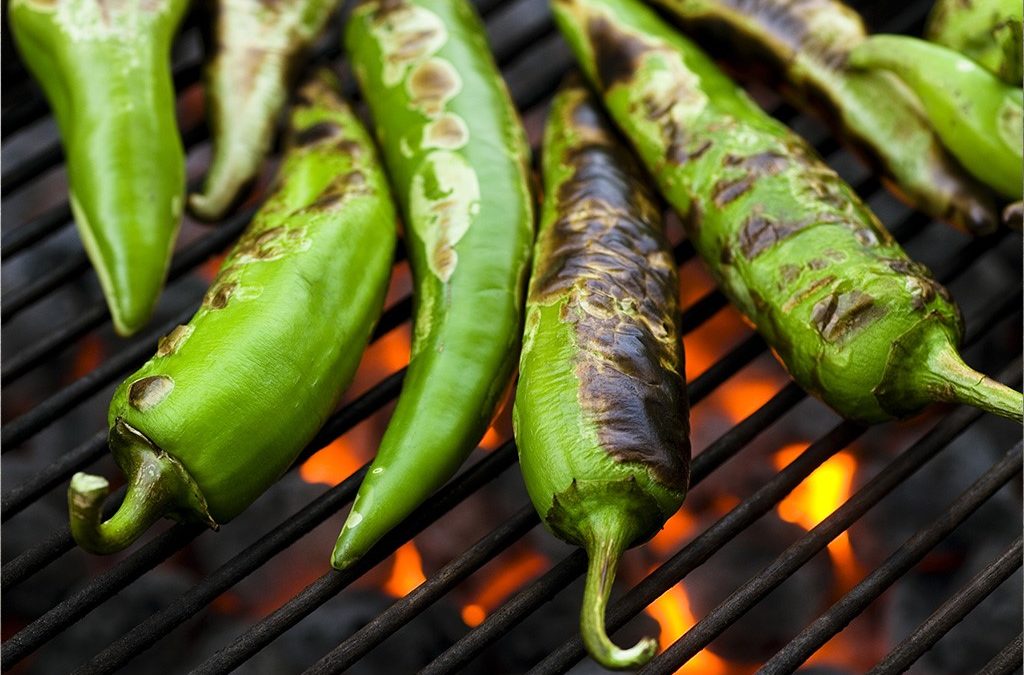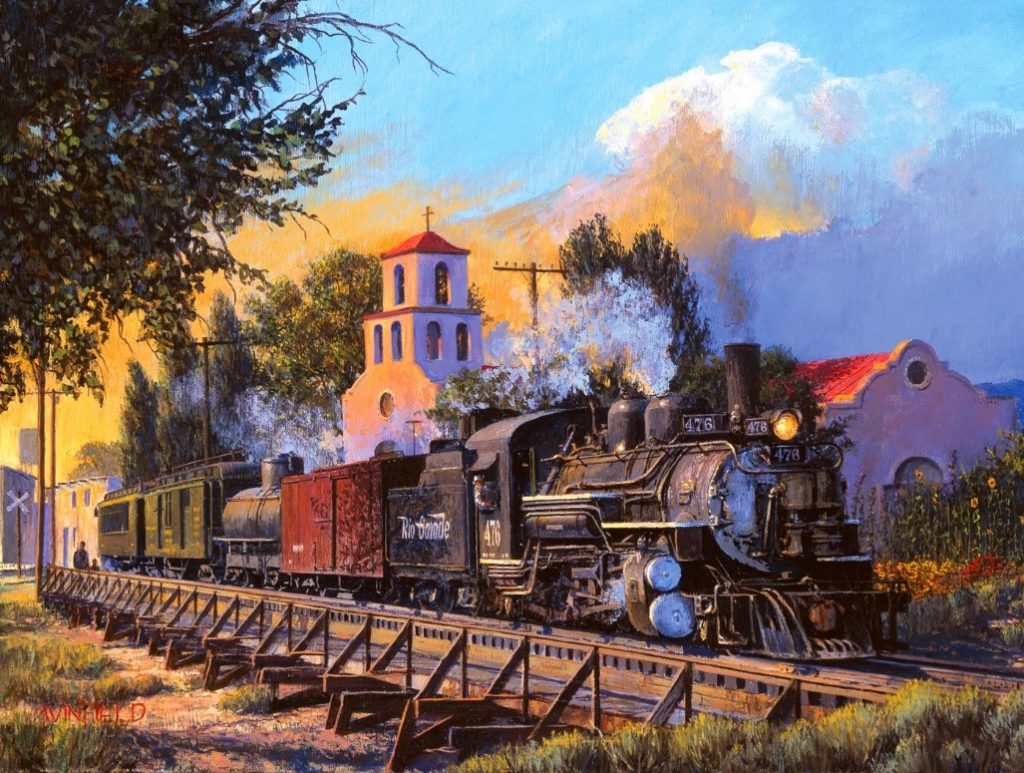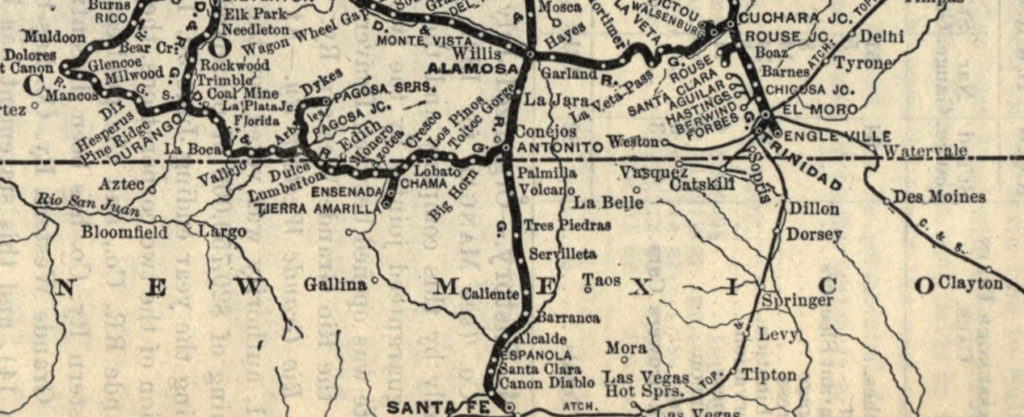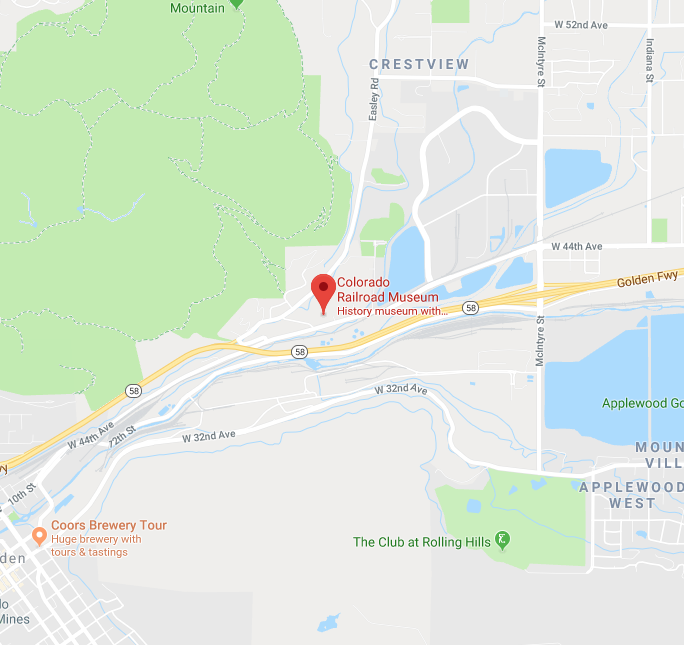It’s September, and for Coloradoans and New Mexicans that means something very special in the world of local cuisine: it’s the start of chili season! If you live in Denver and drive anywhere on Federal Boulevard, you are likely to see roadside chili stands pop up between now and October. If you have never purchased chilies from a roadside stand, it is quite a treat. However, be prepared to buy in bulk! They tend to sell the chilies by the bushel or the half bushel. The beauty of the roadside stand, though, is that the proprietors will roast them right there while you watch. There is nothing like the smell of flame-roasting chilies. So, what does this have to do with railroads, you ask?
There was once a small narrow gauge railroad branch, with a big and complicated history, known as the Chili Line. This branch extended from Antonito, Colorado, to Santa Fe, New Mexico. The origins of this 126-mile line date back to the late 1870s. The initial plan by Denver & Rio Grande founder, William Jackson Palmer, was to create a nearly 2,400 mile railroad that extended from Denver all the way to Mexico City, with the intent to run the line along the Rio Grande (river). This ambitious plan never came to be, partially due to a conflict between the Denver & Rio Grande (D&RG) and the Atchison, Topeka & Santa Fe (AT&SF).
In 1878, the AT&SF and the D&RG were at odds with one another over which company would get to build a line over Raton Pass, which at the time was the most logical route to get to New Mexico from Trinidad, Colorado. After much conflict, the D&RG ultimately ceded Raton to the AT&SF. As a result, the D&RG had to find an alternate route for its line. The D&RG ultimately laid track over La Veta Pass to Alamosa, so the decision was made to continue the route south from Alamosa to Santa Fe.
Construction on the line began in 1880. At this point, the AT&SF had already reached Santa Fe via the line from Trinidad. As they were still fighting over rights to routes, in March the AT&SF and the D&RG signed an agreement stating that the D&RG could not extend track from Española to Santa Fe. To fill this 35-mile gap, the Texas, Santa Fe & Northern (TSF&N) was established by the D&RG. The ultimate goal of the TSF&N was to construct an east-west line from Texas to Utah. Due to monetary troubles, the line from Española to Santa Fe was delayed for several years, but it would finally be completed in 1887.
The research for this posting brought up the burning question, how did this branch gain the nickname of Chili Line? Some articles we ran across say it is because the train hauled chilies, which there is really no evidence to corroborate. Instead, the name comes from an early description of the line, made by Lieutenant John Gregory Bourke in 1881. Bourke was on a special assignment to travel from Denver to Española to study the Pueblo, Apache, and Navajo cultures. Through his travels, Bourke noted the preponderance of Spanish influence in the area, with settlement names like Aztec, La Señorita, Tierra Amarilla, et cetera. He also noted the food had Hispanic influence as well, stating, “Chile, frijoles, and the fine large Mexican onion appear in various forms upon the tables at the refreshment stations” along the track. As he traveled, he couldn’t help but see the beautiful red ristras of dried chilies hanging on the adobe homes in each little settlement. Thus, the nickname Chili Line was born.
As the story of the Chili Line involves both the D&RG and the AT&SF, we pulled recipes from the AT&SF Super Chief and La Fonda in Santa Fe. The Super Chief traveled on the line from Trinidad to Lamy (the nearest station – Santa Fe was actually on an AT&SF branch line), while La Fonda was originally one of Fred Harvey’s AT&SF hotels and eating establishments. The following recipes come from The Harvey House Cookbook by George H. Foster and Peter C. Weiglin, and from the Super Chief Cook Book of Famous Fred Harvey Recipes. Although one recipe calls for canned green chilies, if you live in Colorado or New Mexico, we highly recommend you acquire some freshly roasted at a roadside stand, if possible! As always, if you try the recipe, please share how it turns out via our Facebook, Instagram, or Twitter pages.
Fred Harvey Chile Rellenos Recipe from La Fonda – 1926
Fried Stuffed Chili
6 green chili peppers roasted and peeled.
Flour
Beaten egg
Chicken for Tacos
Butter
Instructions
Peel carefully so as not to destroy the whole chili. Cut the large end for opening. Fill the chili with a mixture like the chicken for Tacos. Roll the filled chili in flour, then in beaten egg, and fry brown in butter. Serve with Salza or Chili con Carne.
*****
Chiles Rellenos a la Konrad
La Fonda, Santa Fe, New Mexico, Chef Konrad Allgaier
8 canned Ortega chili peppers
½ cup grated aged American cheese
½ cup flour
1 egg, beaten
Butter
Fill each chili pepper with 1 tablespoon grated aged American cheese. Roll in flour, dip in beaten egg, roll again in flour. Brown in butter.
Zippy, hot, and delectable peppers with cheese. Delicious served with one of La Fonda’s famous Chicken entrees or with pinto beans as a luncheon dish. Tasting some of the many Southwestern dishes on the menu is one of the many enjoyable experiences for guests at La Fonda, the gay and charming “Inn at the End of the Trail.”
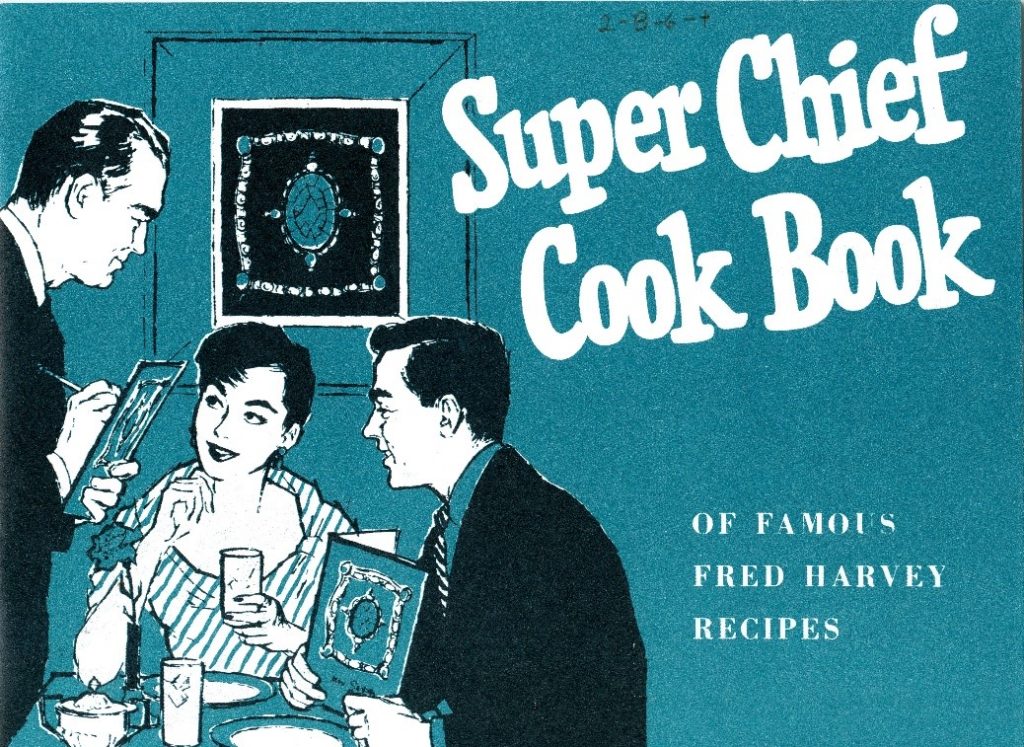
Figure 3 Super Chief Cook Book of Famous Fred Harvey Recipes. Circa 1950s. Colorado Railroad Museum collection.
Past Dining on the Rails Posts:
Dining on the Rails: August – Pullman “Tom Collins” Cocktail
Dining on the Rails: June – How about a salad?
Dining on the Rails – Atchison, Topeka & Santa Fe Ham!
Dining on the Rails: CRI&P’s New England Boiled Dinner
Dining on the Rails: A Sweet Treat for your Valentine!
Dining on the Rails: Black Eyed Peas!
Dining on the Rails: Eggnog
Dining on the Rails: Happy Thanksgiving!
Dining on the Rails: Union Pacific Apple Pie
Dining on the Rails, August 2020
Dining on the Rails, July 2020
Dining on the Rails, June 14, 2020
Dining on the Rails, June 7, 2020
Dining on the Rails, May 31, 2020
Dining on the Rails, May 24, 2020
Dining on the Rails, May 17, 2020
Dining on the Rails, May 10, 2020
Dining on the Rails, May 3, 2020
Dining on the Rails, April 26, 2020
Dining on the Rails, April 19, 2020
Dining on the Rails, April 12, 2020
